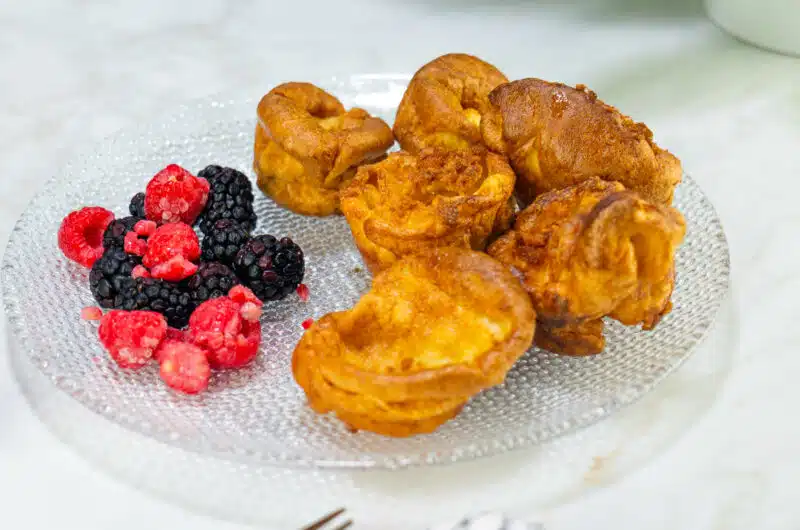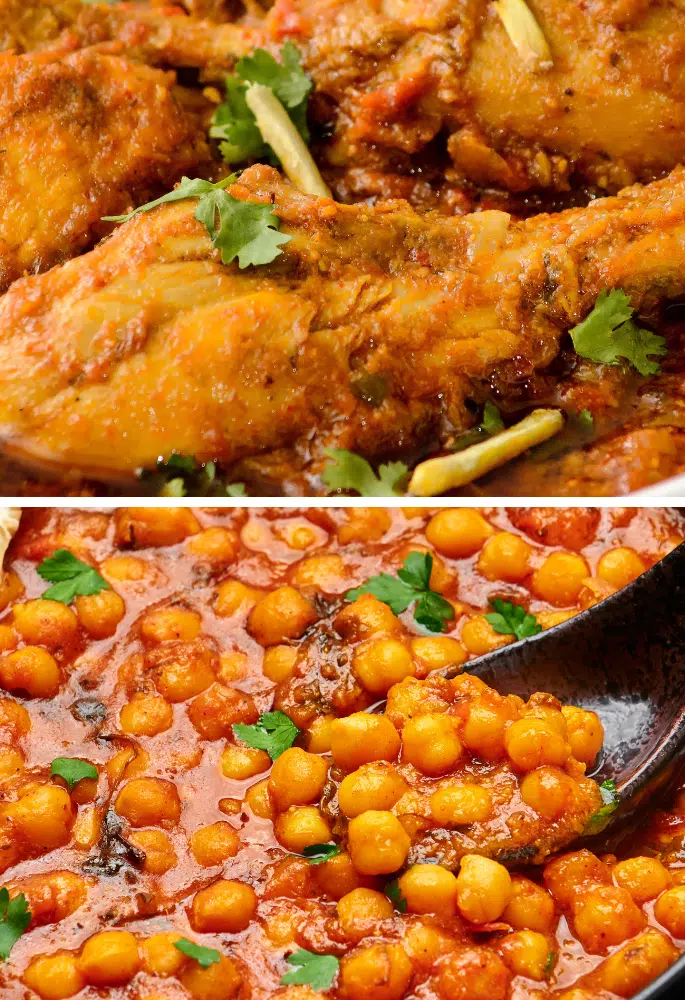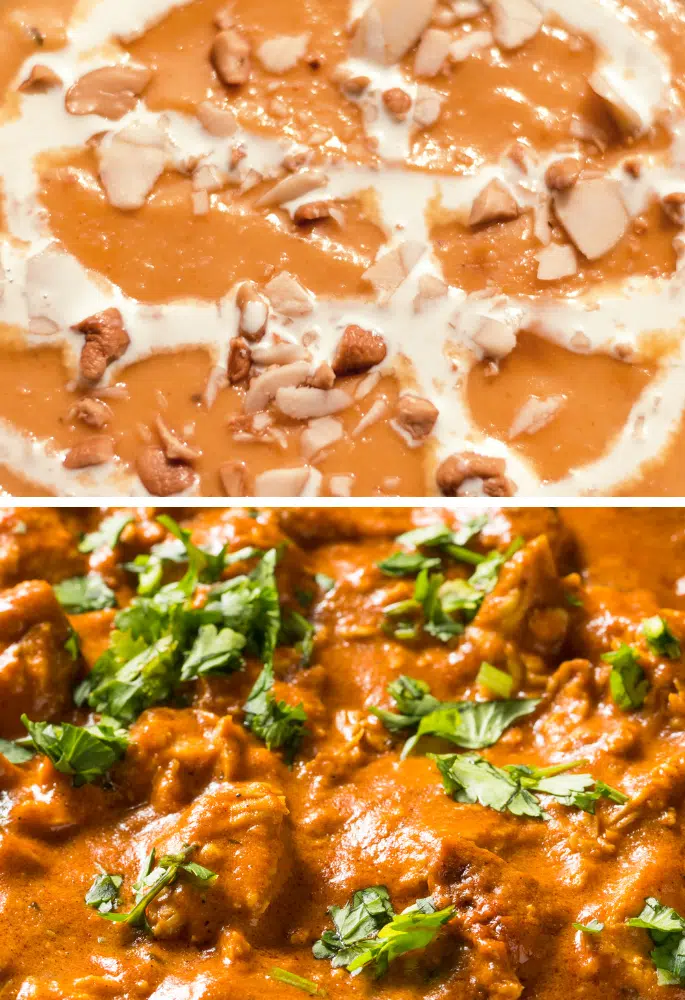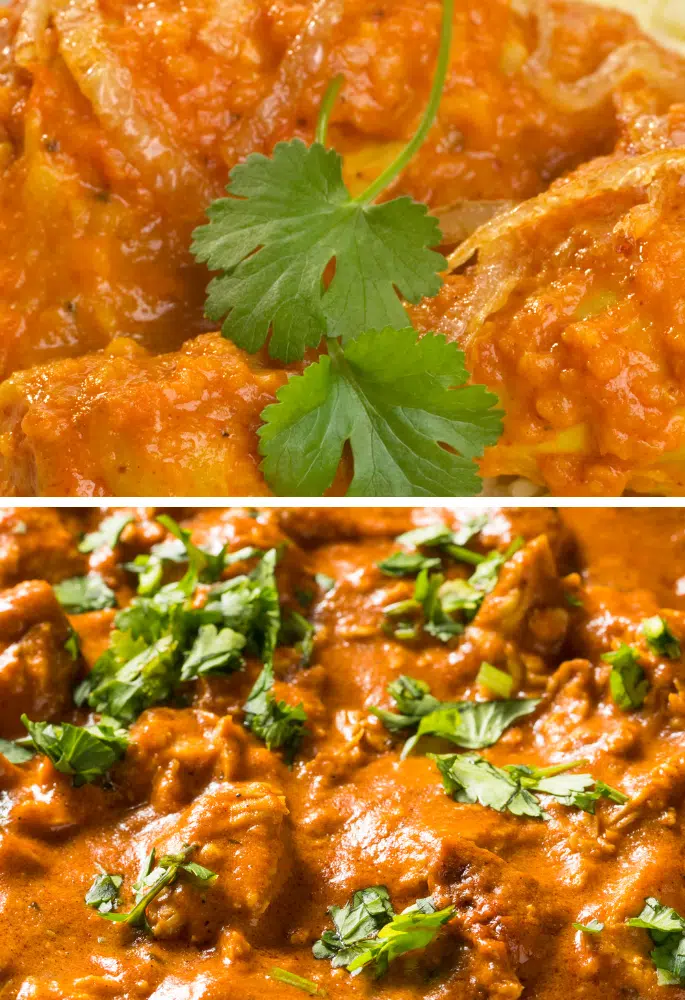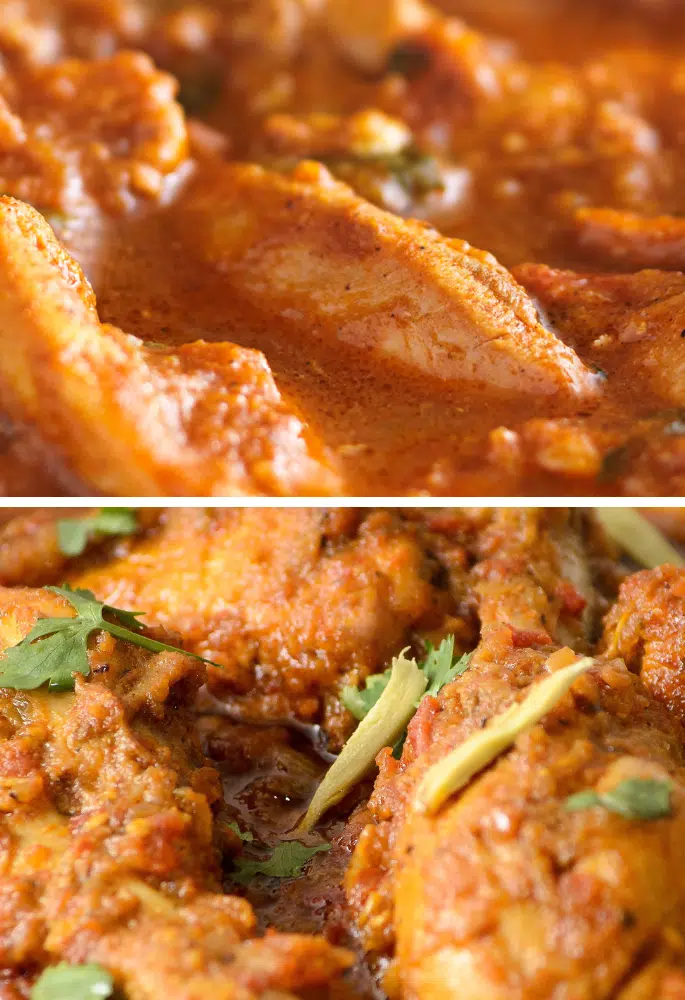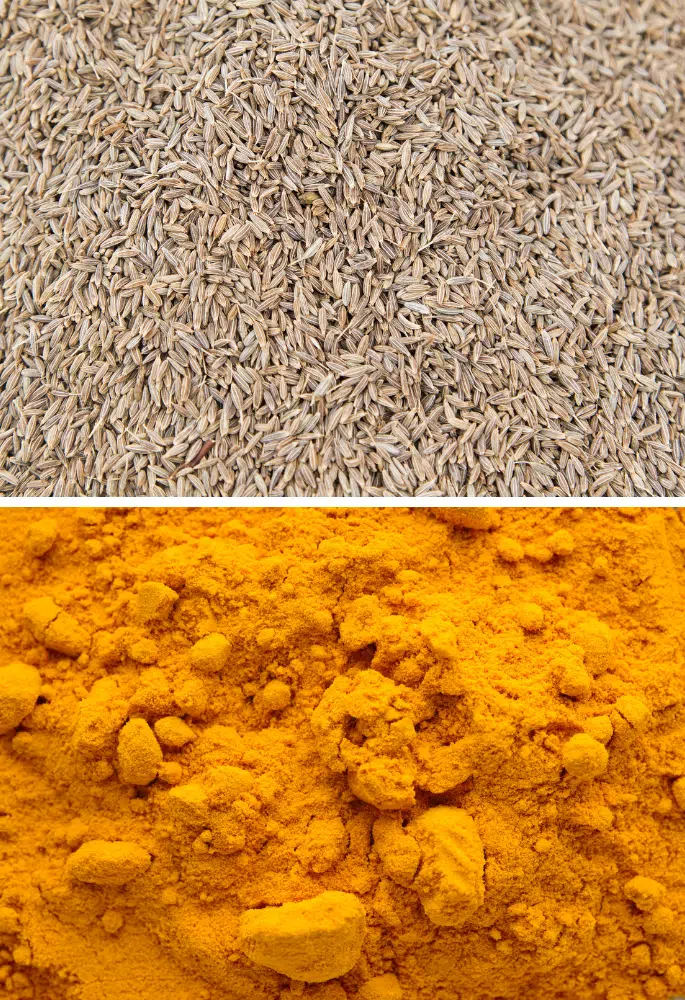No Sunday roast is complete without a perfectly crisp Yorkshire pudding. But what happens if you’ve reached into your cupboard, ready to knock a batch together to discover you’re out of plain flour? Can you make them with self-raising flour instead?
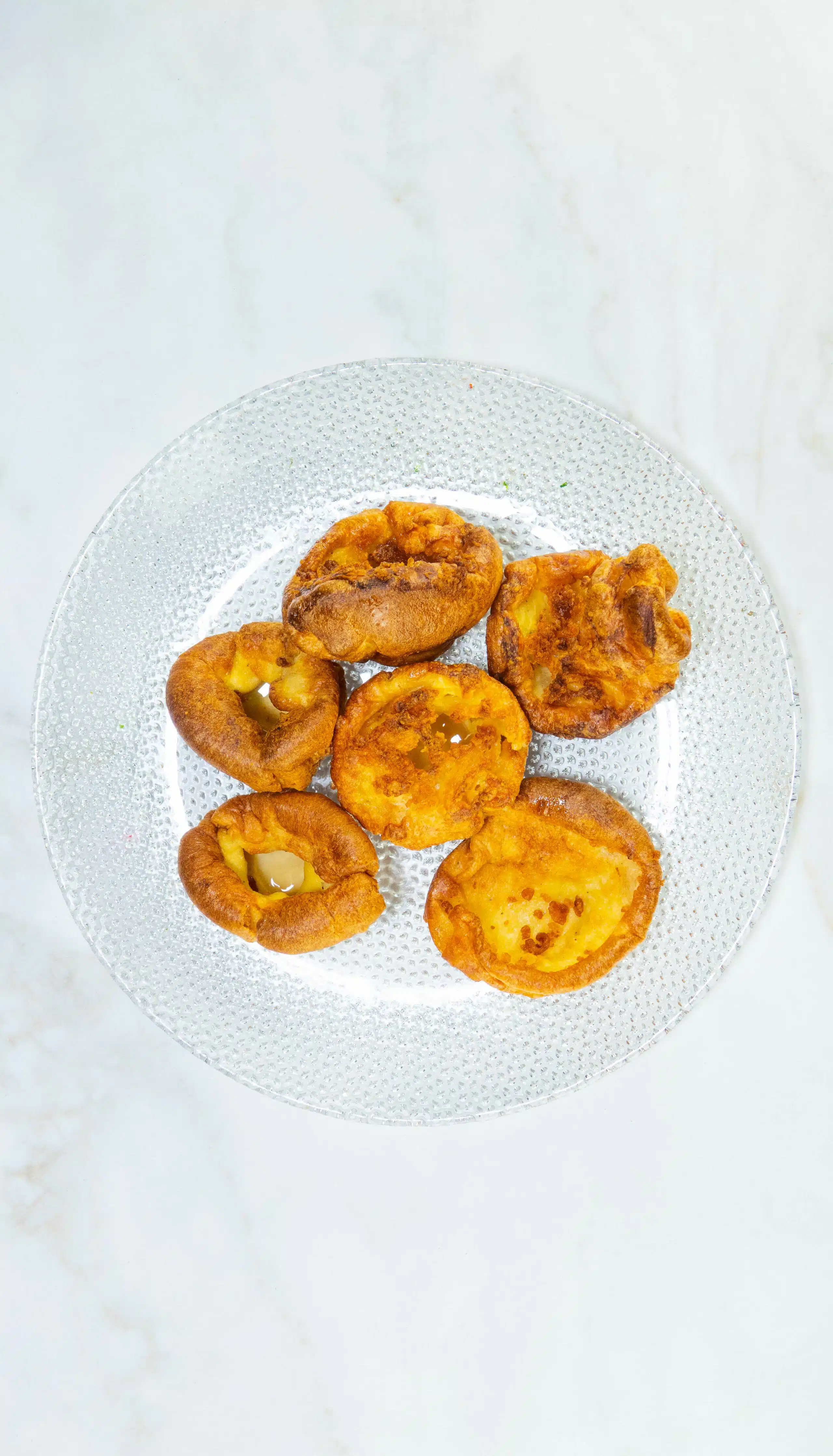
Can You Make Yorkshire Puddings With Self Raising Flour?
When making Yorkshire puddings, you want to achieve a crisp exterior and a soft, airy interior. The rising action is crucial for this, and it comes from the steam generated by the hot fat and the expanding air as the batter heats up.
When you use self-raising flour, which contains baking powder as a raising agent, the batter will rise too quickly and vigorously. Your Yorkshire puddings will then collapse before fully cooking.
Why Self Raising Flour is a No-Go for Yorkshires
There are 3 reasons why self-raising flour will ruin your Yorkshire puddings and why using it should be avoided:
- Premature Collapse: The rapid rise can cause the puddings to inflate quickly and then collapse before the structure has set, resulting in puddings that are dense and doughy instead of light and airy.
- Uneven Texture: Adding baking powder can lead to an uneven texture, with large air bubbles in some areas and dense patches in others.
- Alteration of Taste: Self-raising flour can also alter the taste of the Yorkshire puddings, making them taste slightly chemical or bitter.
To make traditional Yorkshire puddings, you would typically use plain flour. This allows the batter to rise at a controlled rate, helped along by the heat of the oven and the fat, giving you puddings with a crisp exterior and a fluffy interior.
While it might be technically possible to make Yorkshire puddings with self-raising flour, it is not recommended if you are aiming for traditional results.
Can You Make Yorkshire Puddings with Other Flour Types?
Let’s assume you haven’t got plain flour, but you’ve got plenty of other flour varieties in your cupboard. Do any of these work well for making Yorkshire puddings or is plain flour the only way forward?
Yes, bread flour can be used to make Yorkshire puddings. Bread flour simply has more protein molecules than plain flour, but this should not impact the rise of your Yorkshires.
Yes, you can make Yorkshire puddings with gluten-free flour, but the texture and taste may differ from traditional ones made with wheat flour. To enhance the structure and rise, you might need to add additional ingredients like xanthan gum.
Yes, you can use 00 flour for Yorkshire puddings, but they may have a slightly different texture due to its lower protein content. Ensure your oil and baking tin are very hot before adding the batter to achieve a good rise. Follow a standard Yorkshire pudding recipe, substituting in 00 flour.
How Do Yorkshire Puddings Rise?
How can a Yorkshire pudding rise when it is seemingly just a plain batter? And if they rise, why shouldn’t you use self-raising flour? How does it work when there’s no raising agent?
The secret to getting a Yorkshire pudding to rise is moisture and steam.
All there is to Yorkshire pudding batter is eggs, plain flour, milk, and water. The eggs alone would make the batter quite moist, but the additional use of milk and a little water makes for a very wet Yorkshire pudding batter.
When this batter is poured on top of hot oil, the temperature difference creates enough steam to make it rise.
Even as the batter cooks in the oven, steam is still slowly being released because of how much moisture is in the batter. The more steam that is created, the more the Yorkshire puddings rise.
It is because of this steaming method that self-raising flour does not work for Yorkshire puddings. The two rising methods of the flour and the steam essentially cancel each other out, resulting in a very flat and sad Yorkshire pudding.
Tips For Helping Yorkshire Puddings Rise Better
As mentioned, everybody and their Grandma has their own take on making a tasty and successful Yorkshire pudding. Methods span temperatures, ingredient measurements, and specific resting times.
Resting the Batter
You don’t need to rest your Yorkshire pudding batter to make the Yorkshire puddings rise.
However, you will see a significant improvement if you allow your Yorkshire pudding batter to rest overnight in your fridge or at room temperature for an hour.
Not only does resting give the batter time to get more flavourful, but it also makes the interior of the Yorkshire pudding much springier and airier instead of cakey.
This texture is due to the gluten that develops as the proteins and starches of the batter break down while the batter is resting, providing the perfect starting point for the batter to get a puffier rise.
Hydration Level
Another factor to consider when wanting a good rise out of your Yorkshire puddings is how hydrated the batter is.
The more flour you have in your batter and the less liquid you use, the less hydrated the batter will be. Less hydration means less steam production and much flatter Yorkshire puddings.
For the best rise, you want to aim for a 260% hydrated batter. That is 195 grams of hydration (milk, water, etc) for every 75 grams of flour.
Oil Temperature
If you do not allow the oil to get hot enough before you pour your Yorkshire pudding batter into the moulds, then there will not be enough heat to create the steam you need for a good rise.
That is why you need to ensure that you fill your Yorkshire pudding moulds with a couple of tablespoons of oil and get the moulds into the oven for at least 5-10 minutes before you pour in the batter.
This will be enough time for the oil to start sizzling and cause an instant reaction with the batter.
Acacia may be a freelance writer by day, but they are a food fanatic by night. They are always trying out new recipes or finding different ways to elevate classical dishes. But their biggest culinary aim is to educate others on the basics of the kitchen so that they too can enjoy delicious food.


